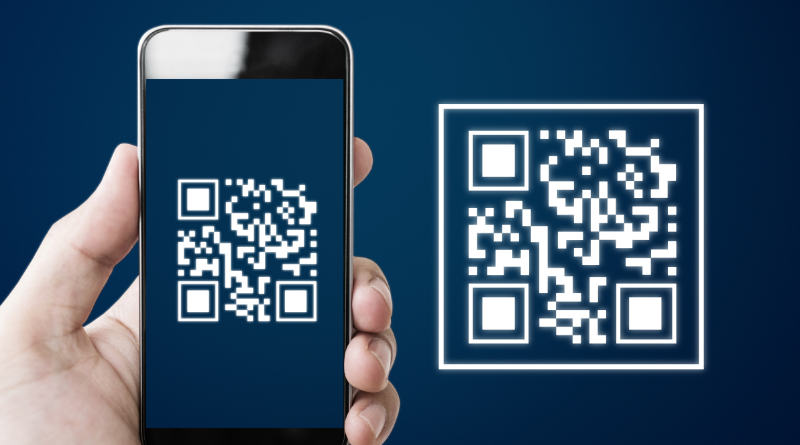Decoding QR Codes – Is it time to embrace this tool in your marketing?
What is a QR code?
A QR code is a square shaped barcode that can store information such as website URLs, text, or contact information. It is typically used to help people quickly access information online without manually typing in a long URL.
When scanned with a smartphone or other device, a QR code can be used to open a link quickly and easily.
They seem to be having a resurgence in popularity right now and it’s worth understanding how they can be used in your business.
Where to use QR codes?
QR codes can be used in a variety of ways, from marketing campaigns to inventory management and lots of other handy applications. For example, they can be used to track items and provide data about their movement. And QR codes are often used for events like tickets and customer surveys.
For marketing purposes, you can add them to your business card, flyer, advert or any other printed material with a link that relates to your call to action or adds to the content or information shared.
You could even ditch your business card altogether. Instead, create a graphic in Canva or Word, that includes a title of where you are sending them, add the QR code that takes them to where you want them to go and any other useful text. Make sure to use your branding colours and logo and then download it as an image file to your phone and save it to your favourites folder.
When you are networking you can open up the graphic for people to scan which allows them to easily connect with you on social media, skipping the searching and scrolling time on social media.
What can you link to?
- Website home page or sales page.
- Discount voucher (website or PDF on Dropbox)
- Launch a video.
- Appointment booking page.
- Favourite social media account.
- Event ticket.
- Customer survey or quiz.
QR Codes versus Barcodes
QR codes are two-dimensional codes that can store much more data than traditional barcodes.
Barcodes, or linear codes, are one-dimensional and are limited to about 20 characters. QR codes can contain up to 7,089 numeric characters, 4,296 alphanumeric characters, or 2,953 bytes of binary data.
QR codes are best used when you need to store a lot of data, such as product information, links to websites, or contact information. However, barcodes are better suited for applications that do not require a large amount of data, such as product tracking in a retail setting.
Static and dynamic QR Codes
A static QR code contains a fixed URL, meaning it always directs to the same website or page. Static QR codes cannot be changed or updated, so they are best used when you want to direct people to a specific page on your website, and you will need a separate QR code for each link or purpose.
Unlike a static QR code, a dynamic QR code is editable, which means you can change the content of the QR code without having to create a new code. This makes it a useful tool for marketing campaigns and other activities that require a quick and easy way to update information.
When deciding between static and dynamic QR codes, it’s important to consider the purpose of the code and how often the content that it links to will change. If the content is likely to change frequently, such as a product link or promotion code, then a dynamic QR code is likely the best option as it can easily be updated without changing the code itself.
Dynamic QR Codes are also trackable, which means you can get data and analytics to measure and fine-tune all your QR code campaigns.
Pros
- QR codes are cost-effective, as they are easy to generate and don’t require printing costs.
- There are lots of apps available to create them.
- They are convenient and easy to use since they can be scanned with a smartphone.
- They help to increase engagement as they can provide an interactive experience for users.
- They can be used to track customer behaviour and gain valuable insights into customer preferences.
Cons:
- Users must have a smartphone and the necessary app installed or photo feature to scan a QR code.
- QR codes can be easily damaged or distorted, making them difficult to scan.
- They can be replicated by cybercriminals and used to spread malicious links or content.
Using the QR Code generator in Canva
1. Find the QR code app
For a simple and straightforward code, try Canva’s easy to use generator. Open up a design in Canva and click on the Apps tab bottom left.
Use the search tool to type in ‘QR code’ to quickly find the relevant apps.
Only the one by Canva keeps you in Canva. The other apps will take you out of Canva and on to their website. You will need to create an account with them to generate a QR code.
2. Generate your code
Use the one by Canva to easily type in your URL link, see a preview, customise the colours and generate your code. It automatically saves into your uploads folder so you can download it or add to your design.
Top tip: Make sure there is contrast between the background and foreground colours for best results. If the colours are too pale or similar, it can cause issues when someone is trying to scan the code.
Please note: Canva’s generator creates static QR codes that aren’t trackable.

Other QR Code Generators
Here’s a round up of other QR codes for you to check out, in no particular order.
- Website Planet (https://www.websiteplanet.com/webtools/free-qr-code-generator) is a free QR code generator that gives you multiple options (e.g. logo, brand colours, etc) all for free.
- QR Tiger (https://www.qrcode-tiger.com) offers dynamic and customisable QR codes with a free version and pricing plans.
- ME-QR Generator (https://me-qr.com) allows you to generate, personalise and track. This one has more free options and less limitations, as well as a paid subscription for even more features.
- QR Code Generator (https://www.qr-code-generator.com) is powered by Bitly. Free and easy to use when creating static QR codes that can’t be edited or tracked. They have a Pro option and have different price plans based on the number of codes generated each month.
- Kaywa (https://qrcode.kaywa.com) has the flexibility to edit your codes and other benefits but has no free package, and is more expensive than the others listed. They do seem to have some big name clients though.
- Free QR Code Generator by Shopify (https://www.shopify.com/tools/qr-code-generator) allows you to easily create static QR codes at a couple of clicks with no account required.
- Visualead (https://www.visualead.com) has a free option with ads and a wide selection of paid packages to choose from, with the prices based on the number of scans and other additional features.
- QR Stuff (https://www.qrstuff.com) allows you to create unlimited static codes and up to 10 dynamic codes. The paid plan gives you more features and customisation.
- QR Code Monkey (https://www.qrcode-monkey.com) is free to use with a lot of customisation options, such as adding your logo, colours and patterns of the code. It is a static QR code and links to the QR Code Generator Pro to create trackable versions.
Conclusion
With the popularity in smartphones as the norm, it makes using QR codes more practical and useful these days. When I first saw them 15 years ago, they seemed gimmicky and clunky to use. They sort of fell out of favour but now they’re on the rise again, I’m excited to use them in my designs, for my own and my clients’ marketing.
The key points or questions for you to consider with QR codes are:
- Where can you save time (typing a long URL or searching for someone or product)?
- When is it important for a person to reach a specific website designation (sales page or offer)?
- Can you add value to the experience (launch a video or quiz)?
And use those answers as your guide as to whether or not to include a QR code in your marketing material, when and where. Don’t just include one ‘just because’. Be intentional.
Originally posted 2023-01-16 10:37:15.
- How do you represent your brand? - January 10, 2026
- The new era of flyers in an online world - November 18, 2025
- Is having a vision or mission important for a small business? - October 27, 2025






